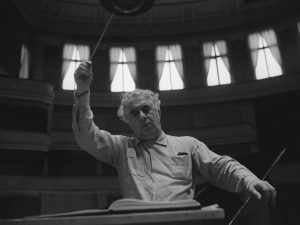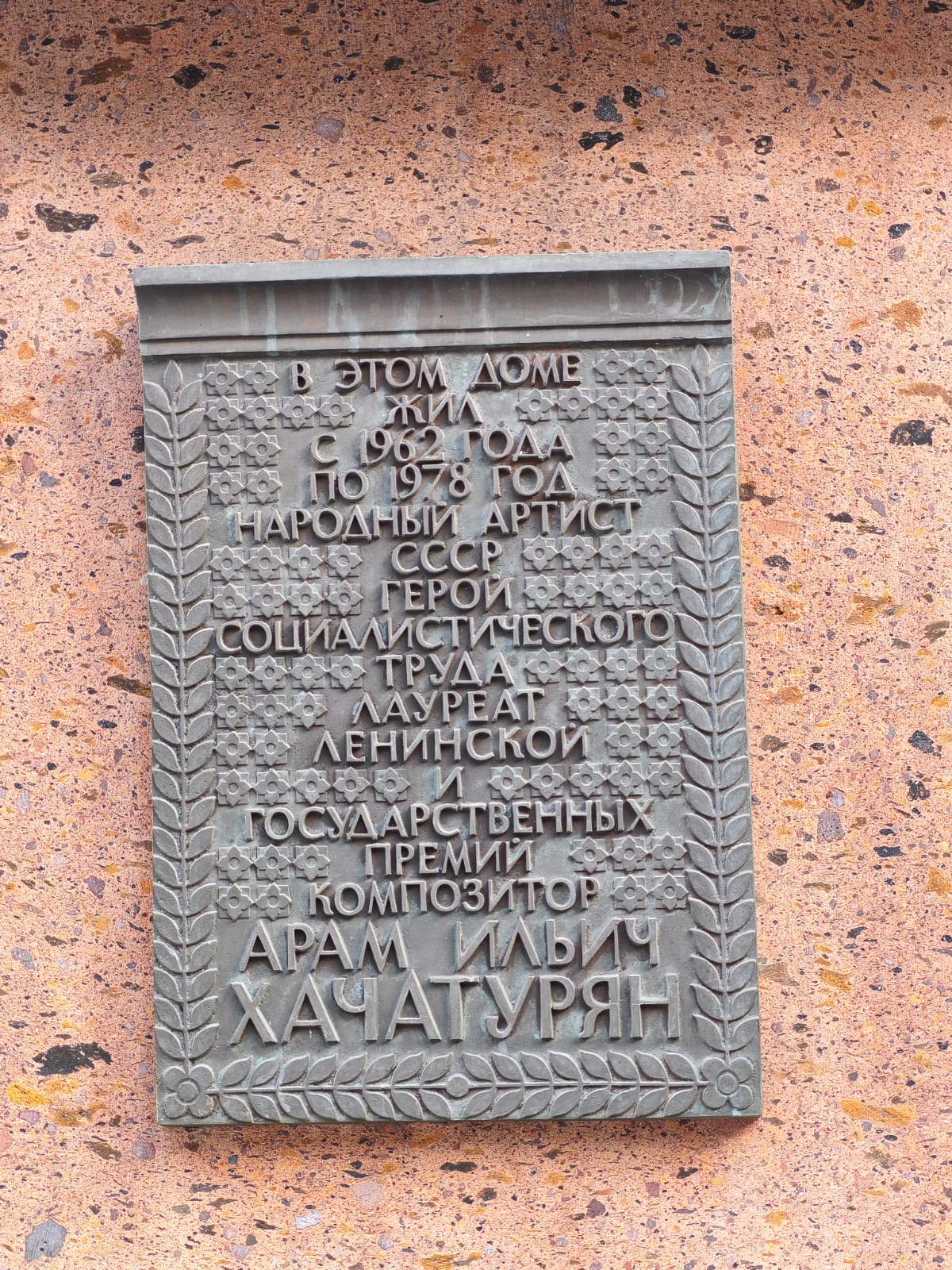Aram Ilyich
Khachaturyan
1903-1978

Aram Ilyich Khachaturyan is one of the most famous Soviet composers, the author of three symphonies and three ballets, six instrumental concertos, many individual works for orchestra and various chamber ensembles, various pieces for violin, cello and piano, and music for theatre productions and films. Aram Khachaturyan was born on 6 June (24 May), 1903 in Tiflis (now Tbilisi, Georgia) into the family of a bookbinder. At the age of 19 he travelled to Moscow in the hope of becoming a musician. In 1922 he entered Gnesin Musical Technical School. He studied in the cello class and then transferred to the composition class. Khachaturyan’s creative development as a composer took place at the Moscow Conservatory. His first works – Trio for Clarinet, Violin and Piano (1932) and First Symphony (1934) immediately revealed Khachaturyan’s outstanding melodic talent. His tendency to combine oriental folk melodies and rhythms with traditional European forms in a natural and artistic way delighted listeners. Khachaturyan’s works include a number of concertos. Khachaturyan’s works include a number of concertos for solo instruments and orchestra (Piano Concerto, 1936; Violin Concerto, 1940; Cello Concerto, 1963); Second Symphony (1943); two thematically related ballets – Happiness (1939) and Gayane (1942), ballet Spartacus (1954); music for plays and films. Three orchestral suites were composed on the basis of the ballet Gayane, one of which contains the world-famous Sabre Dance; another popular suite consists of fragments of music for the Maly Theatre performance of Masquerade, based on Lermontov’s drama. Khachaturyan performed as a conductor and toured with his own concerts in many cities of the USSR and abroad. His compositions were performed by the stars of the performing Jascha Heifetz, George Enescu, David Oistrach, pianists Arthur Rubinstein, Emil Gilels and cellist Mstislav Rostropovich. There is a plaque on the house where Khachaturyan lived from 1962 to 1978.
Address: Moscow, Bryusov lane, 8-10, p. 2

